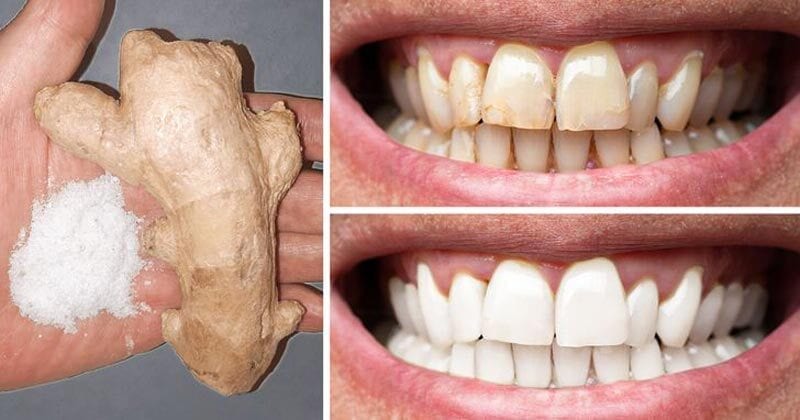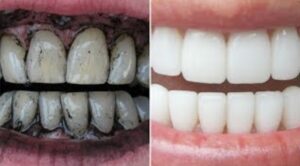Having a bright, white smile can boost your confidence and make you look younger and more attractive. However, teeth can become stained and yellowed over time due to factors like aging, foods and drinks, smoking, and poor dental hygiene. While there are many commercial teeth whitening products available, they can be expensive and may cause sensitivity. Luckily, there are several natural and affordable ways to get whiter teeth from the comfort of your own home. Here are 10 natural methods to whiten your teeth at home:

1. Baking Soda
Baking soda is a mild abrasive that can help remove surface stains from teeth when used as a tooth polish. To whiten with baking soda, simply make a paste by mixing it with a little water. Use a soft-bristled toothbrush to gently brush the paste onto your teeth, scrubbing in circular motions for 1-2 minutes before rinsing thoroughly. Be careful not to brush too hard, as baking soda can wear down tooth enamel over time.
2. Hydrogen Peroxide
Hydrogen peroxide is a natural bleaching agent found in many commercial teeth whitening products. When used carefully, it can help lift stains and brighten tooth enamel. Dilute some 3% hydrogen peroxide with an equal amount of water, dip a cotton ball into the solution, and apply it directly onto your teeth for up to 60 seconds before rinsing and brushing thoroughly. Avoid swallowing any of the hydrogen peroxide solution.
3. Apple Cider Vinegar
The acetic acid in raw, unfiltered apple cider vinegar can help remove stains and whiten teeth naturally. Add 1-2 tablespoons of vinegar to a glass of water, swish it around in your mouth for 1 minute, then rinse thoroughly. You can also use a toothbrush to gently brush the vinegar solution directly onto your teeth before rinsing. Be careful, as the acid in vinegar can erode tooth enamel if used excessively.
4. Activated Charcoal
While it may seem counterintuitive, activated charcoal can help absorb plaque and other compounds that stain teeth. Simply crush up a charcoal capsule or tablet, wet your toothbrush, dip it in the charcoal powder, and gently brush your teeth for 2-3 minutes before rinsing thoroughly. The charcoal may temporarily stain your teeth black, but brushing with regular toothpaste afterward should reveal a brighter smile.

5. Coconut Oil Pulling
Oil pulling is an ancient Ayurvedic technique that involves swishing oil around in your mouth for 15-20 minutes to help remove plaque, toxins, and stains from your teeth. Coconut oil is antimicrobial and is a popular choice for oil pulling at home. Simply put a tablespoon of virgin coconut oil into your mouth, swish it around while pulling it through your teeth, then spit it out after 15-20 minutes and thoroughly brush.
6. Fruit Peels
Fruit peels like banana, orange, or lemon contain acids and enzymes that can help remove stains and whiten teeth naturally. For example, simply rub the inside of a banana peel directly onto your teeth for 2 minutes before rinsing thoroughly. Alternatively, you can create a paste by combining dried fruit peels with baking soda and a bit of water or coconut oil. READ FULL STORY HERE>>>CLICK HERE TO CONTINUE READING>>>
7. Sea Salt
Sea salt acts as an abrasive to gently scrub away surface stains while leaving tooth enamel intact. Plus, it contains minerals that can help remineralize your teeth. Make a salt scrub by mixing a teaspoon of sea salt with your regular toothpaste, then brush with it 2-3 times per week for whiter, brighter teeth.
8. Turmeric Powder
While turmeric may seem like an unlikely teeth whitener, this yellow spice contains active compounds called curcuminoids that can actually help remove stains and whiten tooth enamel. Use a soft toothbrush to brush a bit of turmeric powder directly onto your teeth, let it sit for 2-3 minutes, then rinse thoroughly. Be careful, as turmeric can temporarily stain fabrics.
9. Strawberries
The malic acid found in strawberries acts as an astringent to remove surface discoloration and whiten teeth. You can simply mash up a few strawberries, spread the pulp onto your teeth, let it sit for 5 minutes, then rinse. You can also add a bit of baking soda to make a paste for extra whitening power.
10. Practice Good Oral Hygiene
Of course, the simplest and most effective way to keep your teeth looking their whitest is to practice good oral hygiene habits. This includes brushing twice per day with a whitening toothpaste, flossing once daily, drinking plenty of water, and avoiding staining culprits like coffee, red wine, and smoking. Be sure to also schedule regular dental cleanings.
While these natural methods can help brighten your smile at home, it’s important to have realistic expectations. Most natural teeth whitening results will be gradual and more subtle compared to professional bleaching treatments. However, they are affordable, easy to do at home, and are generally safe when used properly.
Here are some additional tips when trying natural teeth whitening methods:
– Be patient and consistent. It may take several weeks or months of regular use to notice results.
– Don’t overdo it, as most acids and abrasives can damage your enamel if used too frequently.
– Rinse thoroughly after any whitening treatments and brush with plain water after to remove residues.
– Stay hydrated by drinking plenty of water after whitening to help remineralize your teeth.
– Never leave acidic whitening agents like fruit peels or vinegar on your teeth for more than a few minutes.
– Use a soft-bristled toothbrush and whitening toothpaste daily to maintain results.
If you have very stubborn, deep-set stains, it may be worth seeing your dentist for professional whitening treatments that can get longer-lasting, more dramatic results. However, for minor tooth discoloration and maintenance between professional treatments, these natural whitening methods are excellent options to try at home.


 IN-THE-NEWS11 months ago
IN-THE-NEWS11 months ago
 HEALTH & LIFESTYLE8 months ago
HEALTH & LIFESTYLE8 months ago
 SPORTS10 months ago
SPORTS10 months ago
 SPORTS10 months ago
SPORTS10 months ago
 IN-THE-NEWS11 months ago
IN-THE-NEWS11 months ago
 METRO7 months ago
METRO7 months ago
 SPORTS10 months ago
SPORTS10 months ago
 SPORTS10 months ago
SPORTS10 months ago




